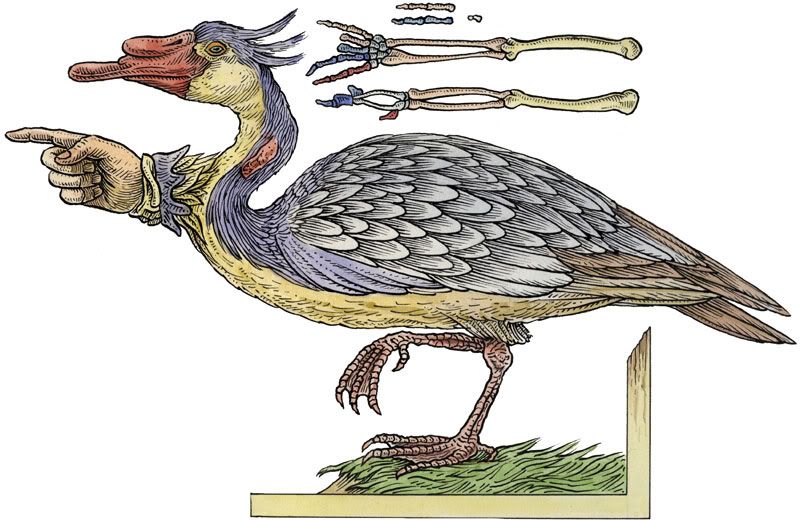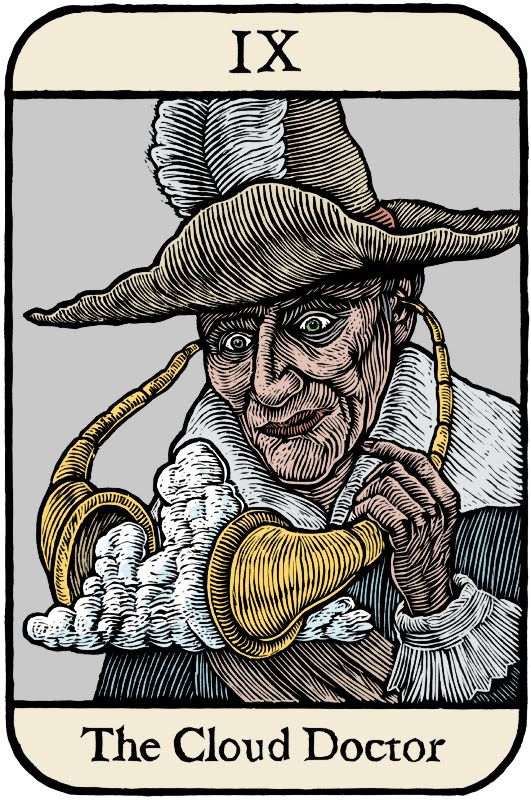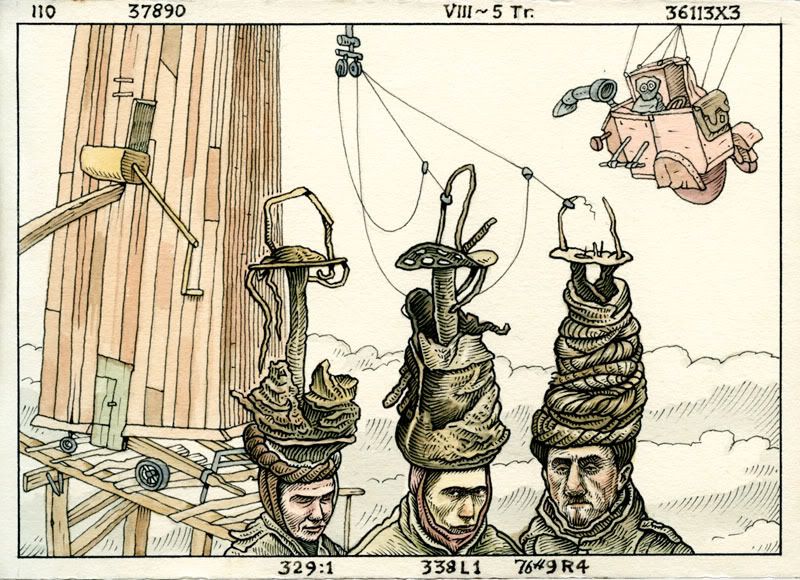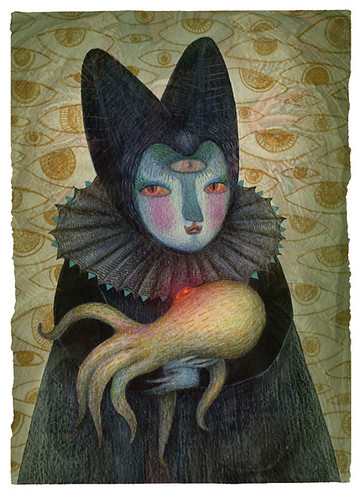This isn't the first time I've written about ceramic artists playing with variations on flora and fauna as we know it; it is something which definitely appeals to me, and fits squarely in that wondrous creative region where art and science intersect. Chicago-based artist Chris Garofalo took inspiration from her garden when she began to make hybrid creatures or plants in clay. I particularly like how her site describes this as imagining a different evolutionary path for life:
By blurring the distinction between lang, sea and air, the plant and animal kingdoms- by examing the state between the waving arms of a sea anemome and unfurling tendril of a fern- a kind of hybridization or exogamy of all biological lifeforms takes place. The results are an exploration into what might have occurred with slight changes in early evolutionary events.
The 'Basidiomycete Florid Hoveren' above alludes to the Basidiomycota a phylum which contains 37% of the true fungi, including mushrooms and yeasts. "Florid", of course, means flowery, and "Hoveren" is apparently Old English (frequentative of hoven) from which we get words like hover. So perahps it describes itself as a flowery, hovering, mushroom. the 'Siphonophore Royale' below is more transparent; a siphonophore is any of various transparent marine hydrozoans, of the order Siphonophora, that float or swim as colonies of polyps, the sort of colony of creatures we sloppily think of as 'jellyfish'. The 'Corallia Bractea' below literally can mean a 'gold leaf' coral, but it is also reminescent of the bracteate flower, where a group or cluster of flowers arranged on a stem that is composed of a main branch or a complicated arrangement of branches (or bracts). The sculpture below, 'Blastomycetes' actually refers to a real organism; Any of various yeastlike, budding fungi of the genus Blastomyces that cause diseases in humans and animals. 'Redocumaize Porifera' is a bit mysterious. We know that porifera are the sponges, and maize the corn family. We can see how she is imagining alternate pathways for polyps, mushrooms, corals, flowers, grasses and sponges, or growing a garden of ceramic evolutionary might-have-beens.
Be sure to peruse the rest of her portfolio!





















